There is no question about how good bees are for the garden. But having a hive right in your backyard brings the risk of bee stings to you and your family. Here are the best tips on how to get rid of bees in different ways.
1. Use a bee spray
Bee sprays eliminate bees by targeting their nervous system. This causes paralysis and eventual death. These have strong chemicals that harm insects and can cause adverse side effects to humans and pets.
PT Wasp Freeze II is a spray-on insecticide that kills upon contact. Position yourself 15 feet or less away from the hive and start spraying.
It comes out in a shower rather than a stream, allowing it to cover a larger area. The chemicals work their magic once they fall on the bee. Paralysis is immediate, and they die within minutes.
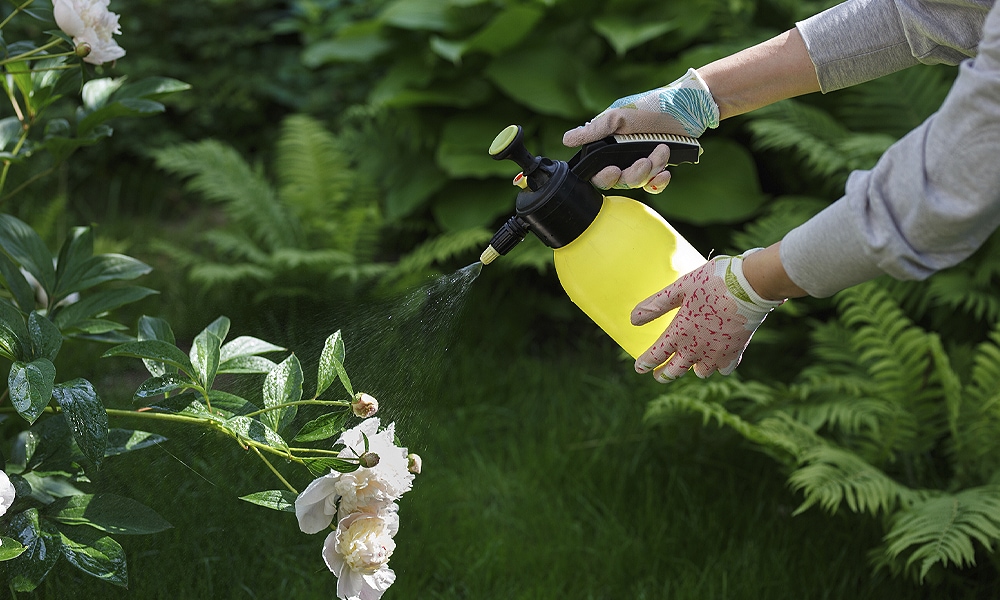
It is best to apply this at night when most of the bees are in the hive. This way, you only have to spray in one area. Remember that bee spray requires contact to work, so you need to be within the colony’s territory to use it.
They may be threatened by your presence and attack you, so wear protective equipment to avoid stings. Note that this a bee spray for yard or outdoor use only.
Proper ventilation is required to prevent accidental inhalation of the aerosol. Nevertheless, it is good to wear a mask Take precautions to keep this away from kids and pets.
2. Use a powder dust
Using insecticidal powder is your best way to get rid of bees nest and all the bees in it. Similar to bee sprays, this uses active ingredients that cause paralysis and death.
Bayer Tempo Dust is an insecticidal powder that is among the best bee killer spray on the market today. You can buy a duster for easier application, but the bottle it comes with works just as well.
Simply place the bulb inside the hive or nest and squeeze a few times to deposit the powder. It is best to do this at night when most of the bees are inside. It takes a couple of hours, but it is very effective in killing the colony.
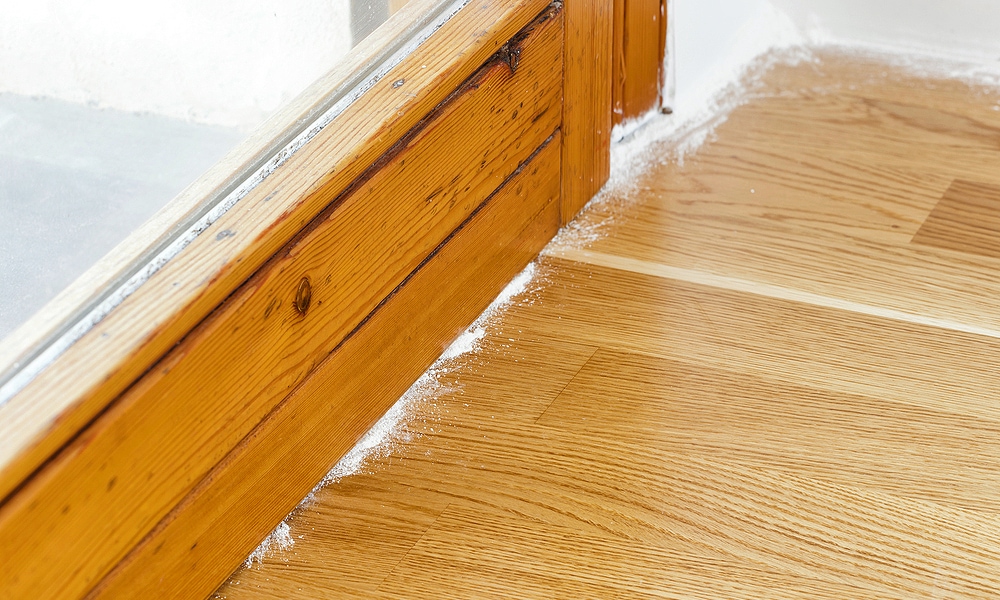
Delta Dust Insecticide sets itself apart by being a completely water-proof insecticide and is approved for use in food-handling establishments.
Fill a hand or power duster only halfway with the powder to allow for adequate airspace. A little shake before using should create a fine, barely perceptible covering of dust. Apply into openings and crevices where bees enter.
As with any insecticide, you have to be careful to avoid inhalation and contact with skin. Wipe off any excess that falls off the crevices and lands on surfaces where humans or pets can get to.
3. Install an electric bug zapper
If you’re want to know how to get rid of bees in house without the threat of toxins, a bug zapper is your best bet. An electric bug zapper emits ultraviolet rays that attract insects.
When they fly too close and touch the grid, they get electrocuted with a short “zap” sound. The dead insects drop to the base or on the ground, which makes for an easy clean-up.
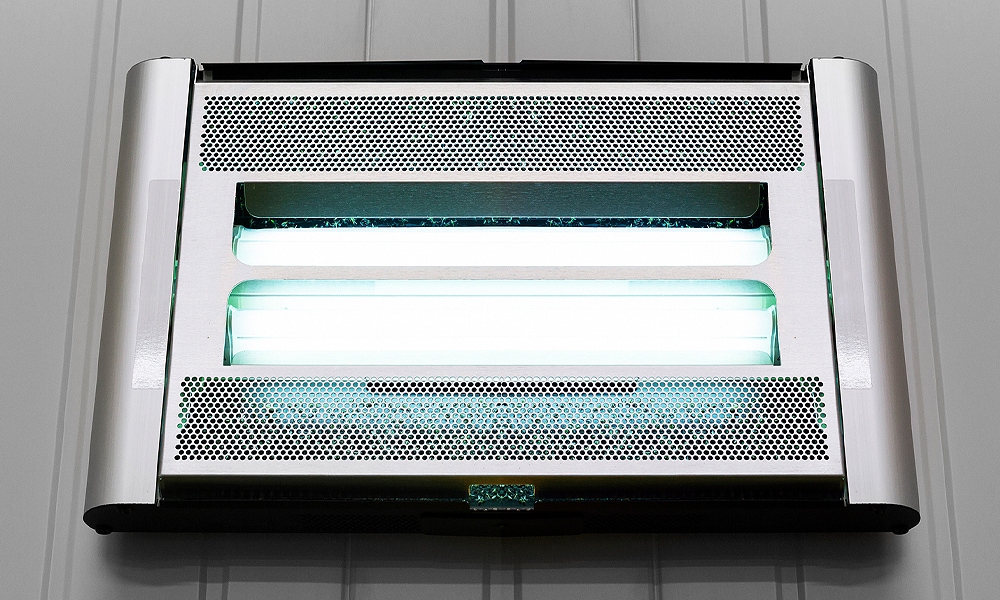
PestNot Bug Zapper is effective on a variety of insects, including bees. It delivers 2000 volts of electricity that kill bees quickly. But even with this high voltage, it’s surprisingly cost-efficient on electricity.
Its waterproof head allows its use during the rainy season. It looks like a lamp emitting a blue glow that attracts insects within a one-acre radius.
All you have to do is plug it in a socket nearest where you hear bees buzzing and hang it on a hook. You may need to use an extension cord if the nest is far off. This works best at night in a position close to the beehive. Be sure to check on it regularly to clean out the dead bees.
4. Use vinegar
This pantry regular has a lot of uses, but not a lot of people know that it is a good bee repellent. It’s an option if you do not want to use chemical insecticides for the side effects.
It’s also good if you would rather repel bees than kill them. Note that this all-natural solution may not be as effective as other methods if the infestation is heavy.
Although there is no conclusive study explaining why vinegar can be used to deter bees, it is also believed to smell foul, interfere with their respiratory function, and cause suffocation.

There are several ways to use vinegar as a bee repellent. One is by drowning them in water. Fill several cans with water and put a few drops of vinegar in each.
Then place them strategically near the hive. You can also make a DIY bee repellent by mixing equal parts of water and vinegar in a spray bottle.
Bees that are coated in this solution find it difficult to fly. If using the vinegar spray method, be sure to wear protective equipment when approaching the hive.
5. Use an ultrasonic pest repellent
Interesting trivia: Bees do not have ears. Instead of hearing a sound, they feel it through specialized organs on their antenna and their legs. These pick up air vibrations that bees use to communicate.
Neatmaster Ultrasonic Pest Repeller is a bee nest removal device that takes advantage of their sensitivity to sound. This emits sounds in three settings: bionic waves, electromagnetic waves, and ultrasonic waves.
The first two are undetectable to the human ear, making it an unobtrusive method of getting rid of honey bees. The third setting is best for heavy infestations, and it can be heard by humans.
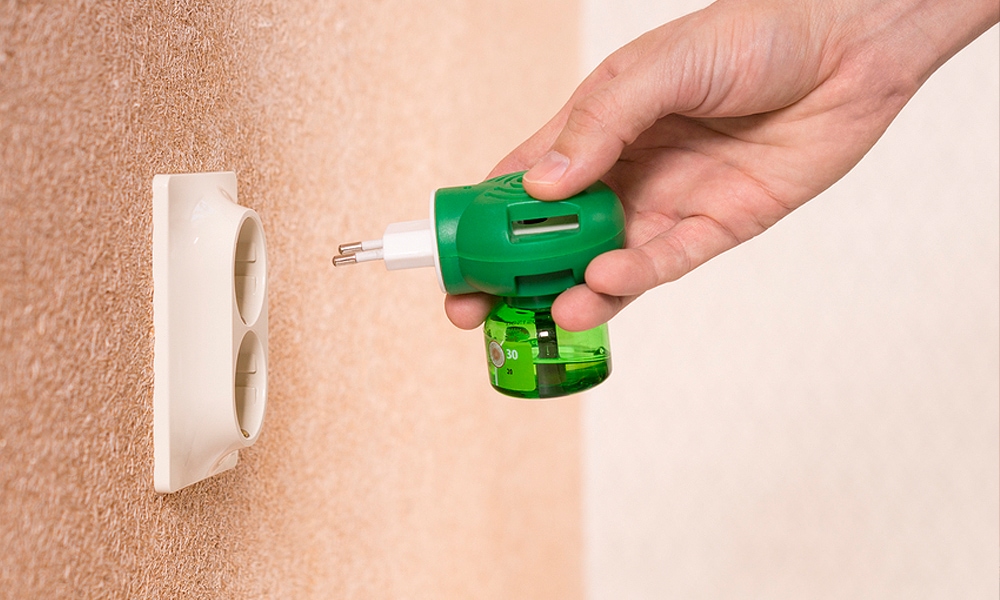
Note that some pets can hear the frequency, so watch out for their reaction when you turn it on. For those who want to have a honey bee repellent that is non-toxic, requires no maintenance, and is easy and convenient to use, this just might be the method for you.
So how to repel bees using this ultrasonic device? Just plug it in a socket 20-100cm from the floor and within 1200 square feet radius from the beehive and you’re good to go.
The sound does not penetrate through walls or obstructions, so you will need one for each room if it’s an indoor bee infestation. If it’s outdoors, you’ll have no problem.
6. Plant bee repelling plants
If you’re scratching your head, thinking about how to keep bees away with the very things that attract them, we understand where you’re coming from. Bees seek out plants to get nectar. So how would plants repel them?
The truth is, there are very few plants that act as effective bee deterrents. Cucumbers have acidic peels that get rid of bees and wasps.
Pennyroyal, neem, mint, cloves, eucalyptus, and citronella all have strong smells that deter bees. Red germaniums and red marigolds are among the few bee repellent plants that produce flowers.
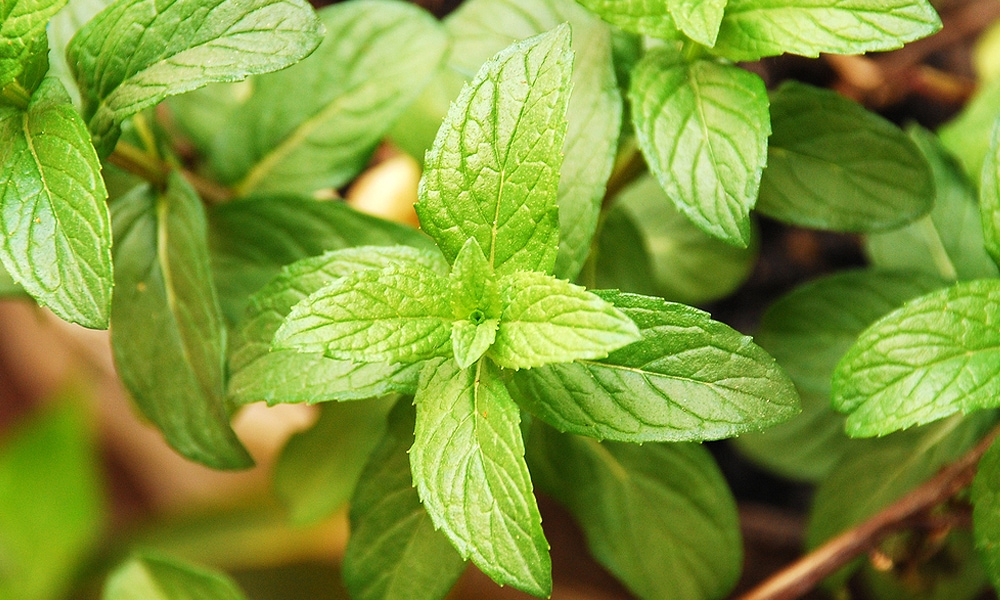
Bees do not see the color red and will flock to these flowers, thinking that they have pollen. But these have little pollen and have a smell that is offensive to these bees. Pitcher plants are great natural bee exterminators.
These carnivorous plants trap insects inside their pitcher-like structure and digest them. Do research on which plants are easiest to grow in your area. This is a good way to solve hive apartments problems since pesticides are dangerous to use in small spaces.
Aside from planting bee repellent plants, you may also want to remove bee-attracting plants or at least position them in the farthest corner of your property. Replace flowers with leafy foliage, so bees do not have nectar.
7. Light a citronella candle
We already mentioned that citronella has a strong smell that repels bees. If you don’t have a green thumb, you can achieve the same effect with a citronella candle.
Citronella candles are much easier to find. They’re available in department stores and candle shops. These sell like hotcakes because they repel everything from bees to wasps, and mosquitoes to flies.
Place a citronella candle near the hive and light it at night. This is the best time to do this because most of the bees are at home.

Plus, you get a pleasant smell wafting through your window as you sleep. Another variation of this would be to buy citronella essential oil and use an oil diffuser to allow the smell to permeate the surroundings.
The advantage is that you can easily change the oil for a different scent. A citronella candle is not toxic and leaves no residues. It is used to repel bees, not harm them.
If you want to keep bees away from you but leave them free to pollinate the earth, this is a good way to do that. But for heavier infestations, you may need something stronger.
8. Use mothballs
Mothballs and bees are like oil and water: they do not mix. But what deters bees from this storage staple?
Mothballs are basically insecticides in the form of balls. In a process called sublimation, mothballs transform from solid directly into vapor over time. In doing so, the particles release that distinctive fresh-from-storage smell.
Mothballs can be made of either naphthalene or paradichlorobenzene. Naphthalene not only drives bees in house out, but it also kills them. Before using this chemical, be sure to keep it somewhere safe as it can be toxic if eaten or inhaled by humans and pets.

Do not use this if you have neighborhood beekeepers who harvest honey, as it can contaminate the product and render it unfit for human consumption. A relatively safer option would be paradichlorobenzene.
It repels bees but does not kill them if applied in small amounts. The side effects on kids and pets are not as bad as in naphthalene. Old Fashioned Original Mothballs are made of 99.75% paradichlorobenzene.
If you have a bee problem in the yard, put the mothballs in old stockings or wrap them in cheesecloth. Use a string to hang them near the beehives. The more you put, the stronger the smell. This makes a stronger deterrent, but also increases the likelihood of adverse effects. Make sure kids and pets do not go near the area.
9. Create a bee trap
Trapping bees is one way of getting rid of them. It entails luring them into a container they can easily enter but have trouble escaping from.
There are specially-made bee traps available, but the principles that make these effective can easily be replicated using items found in your home.
All bee traps have a narrow entry point into a large space. A sweet solution is placed inside to lure them. The bees are attracted, enter through a small hole, and are trapped when they cannot find the way out.
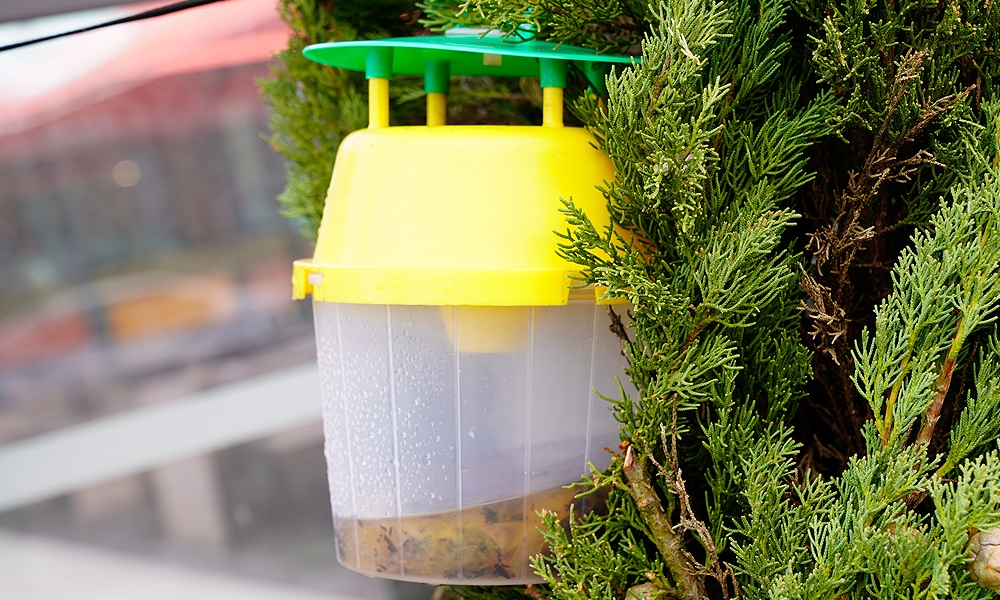
A do-it-yourself bee trap can be fashioned out of a 2-liter bottle. Cut it into two around five inches from the opening. Then invert the top half into the bottom half. It should look like a funnel.
Secure the two pieces using a stapler or heavy-duty tape. Once done, put a sweet mixture inside. The most effective would be artificial nectar, as this is their natural food. Other options include cane sugar or maple syrup mixed with water.
If your goal is to kill the bees, put a couple of inches of the solution inside to drown them. But if you prefer to trap them and set them free in a different area so they can continue to pollinate, put a smaller amount inside.
10. Use cinnamon for relocation
Cinnamon is a versatile spice, but not a lot of people know it’s great for getting rid of beehives. This natural bee repellent has a stench that bees find it hard to stomach.
If their nest smells of cinnamon, they tend to look for a different place to stay. You can sprinkle ground cinnamon near or on their hive. Just be sure to wear protective equipment as some bees may attack you once they get a sniff of the offensive smell.
You will have to keep this up for a couple of days to get the results you want. If you put a lot of powder, you see some bees stuck in it.

The powder appears to make movement difficult, and some people report that ground cinnamon can actually kill bees. However, the usual result is beehive relocation.
The results may not be immediate, but on the bright side, you’re able to get rid of bees naturally and without the ill effects of chemical pesticides. It’s also a good way to make bees go away without killing all of them.
You can also incorporate cinnamon into a homemade bee prevention spray. A couple of drops of cinnamon oil in a cup of baby shampoo can help get rid of honey bees.
11. Use garlic spray
Garlic has a pungent, spicy smell that bees and other insects do not like. This is an easy home remedy to get rid of bees because everything you need is already in your kitchen.
Before we discuss how to get rid of honey bees using garlic, it’s worth asking why it works in the first place. A study published in the Journal of Insect Science showed that garlic extract causes acute toxicity in bee larva, and decreased body mass and decreased walking activity in adult bees.
To make a strong repellent using garlic, you will need two full heads of garlic and a half cup of just-boiled water.
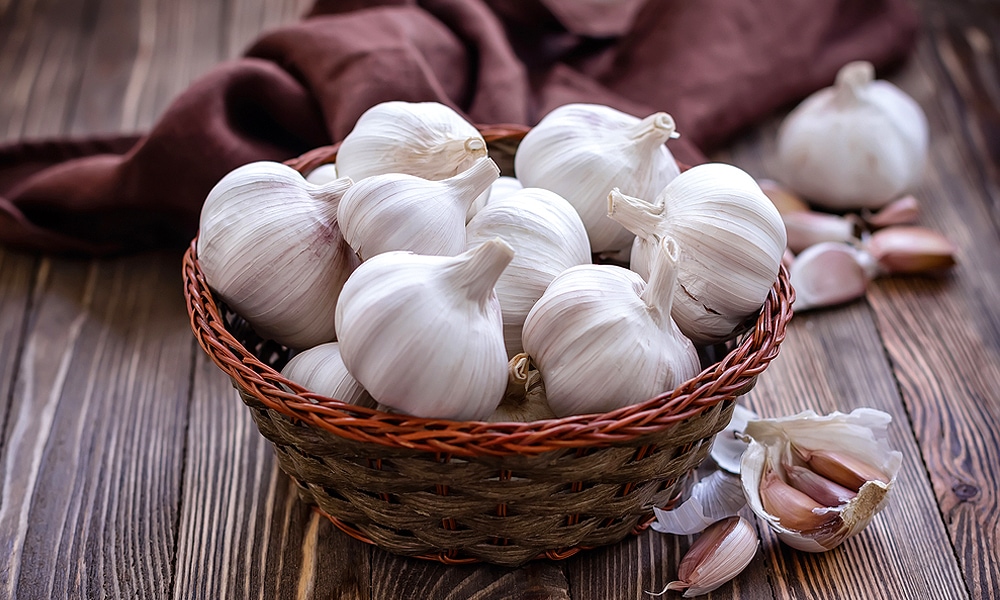
Crush the garlic or mince it finely and place it in hot water. Leave it overnight to allow the mixture to steep. Then strain the liquid into a spray bottle and throw away the large pieces of garlic.
You can add a smattering of chili flakes or hot pepper sauce to strengthen the mixture. Adding a dollop of dishwashing liquid helps smother eggs and larva.
You can spray the mixture on flowering plants to remove the bee colony’s food source. If you have protective equipment, you can try spraying this directly on the hive.
12. Water your lawn frequently
If you have bees that make their nests in the ground, watering your lawn is among the easiest home remedies for bees. You’ll know you have ground bees if you see little holes in the dry patches in your garden.
Unlike your typical hive colonies, these bees are solitary. A female mates with a male and burrows into the ground to nest and hatch her larva.
The good thing is, ground bees are pretty placid as far as bees go. However, if you are allergic to bee stings, it’s still better to err on the side of caution and drive them off.
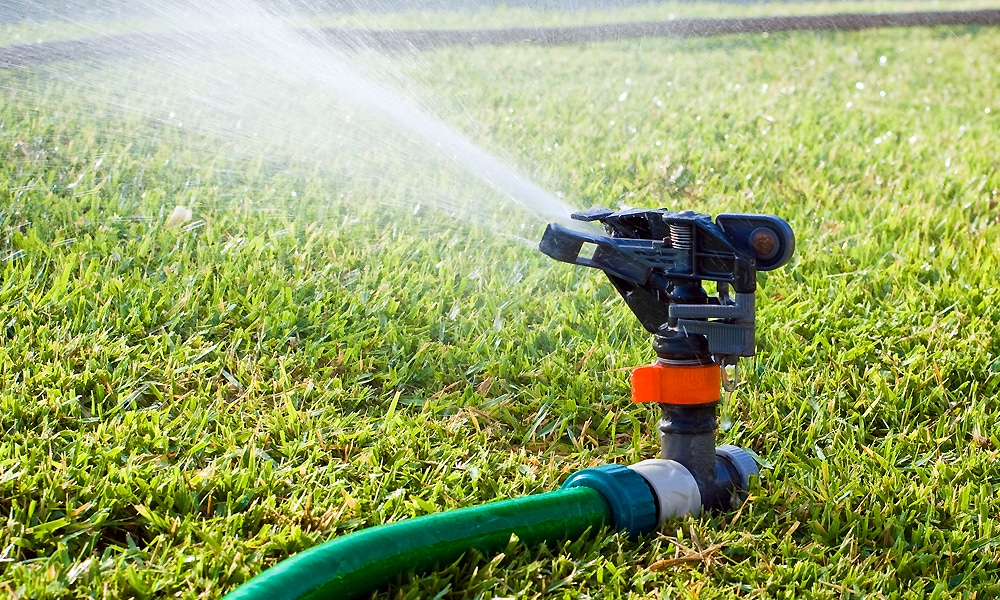
Ground bees prefer soil that is dry because they can easily burrow into it. If you have an infestation, that means your yard is in need of more water and vegetation.
By watering your lawn once or twice a day, you make the conditions unfavorable for ground bees. Moist soil could bury the larva and be a breeding ground for bacteria and fungi.
It also encourages the growth of plants. Additional ground cover makes it difficult for bees to burrow in.
13. Use an insecticide
Bees in wall cracks and crevices pose a unique problem for homeowners everywhere. It is not only important to get rid of bees but to fill up the holes so these cannot be used by bees the following season or by other pests.
So if you’re wondering how to get rid of bees and at the same time keep them from coming back, this product is a good choice for you.
The most common bee species that cause home damage are carpenter bees. As their name suggests, they work with wood–specifically, they drill holes into them.

The Carpenter Bee Control Kit is made especially for this kind of infestation. It contains a spray-on insecticide solution, an insecticidal dust powder, and plugs to seal the holes. In addition, you will need to buy a hand sprayer for the solution and nitrile gloves for protection.
The spray-on is first diluted with water and sprayed on areas where the bees go. After the solution has dried, the powder is dusted on the same areas or on the bees themselves.
Wait two weeks to allow the bees to come in contact with the insecticides and bring them further into the nest. If you don’t see any more bees, use the trebor plugs to fill in the holes the carpenter bees drilled into the wood.
13. Soap and water
PS! Consult with a wildlife professional / beekeeper before you consider removing bees by yourself. This is dangerous and you need to use protective equipment.
Resolving your bee problem with soap and water sounds tempting because the materials are easily available, but this is among the most dangerous to perform.
It’s guaranteed that bees will come at you if you attempt this, so you have to be fully protected and have a back-up escape plan in case things go awry. If you’re allergic to bee stings, you shouldn’t even consider this option.
Soapy water works because the soap forms a waxy coating on the bees and the hive. This impairs the bees’ ability to move through air and cuts of the air supply of the hive.

An effective soapy solution is made of at least 10mL of dishwashing or laundry soap mixed into a bucket of water. The key is to make it as frothy and bubbly as possible.
You can choose to pour it over the hive, but that would entail getting very close to the bees and their stings. It may also be difficult to do this if the hive is located high up. An easier way would be to spray the soapy water from afar using a hose.
Even from a distance, this is dangerous. In the time it takes for the soap to take effect, you could already be swarmed by bees. It is best to invest in a proper beekeeper’s suit if you would like to try this method.
15. Call a professional
If you want to keep bees away while preserving the safety of your family and the bees themselves, your best option is to call a beekeeper.
Beekeepers usually have their own apiary or bee farm. They take care of these insects to harvest their honey and provide pollination services. There are those who do it as a hobby and others who do it as a business.
Either way, their expertise and equipment allow them to provide the valuable service of removing bees from your home. Therefore they should be compensated appropriately.
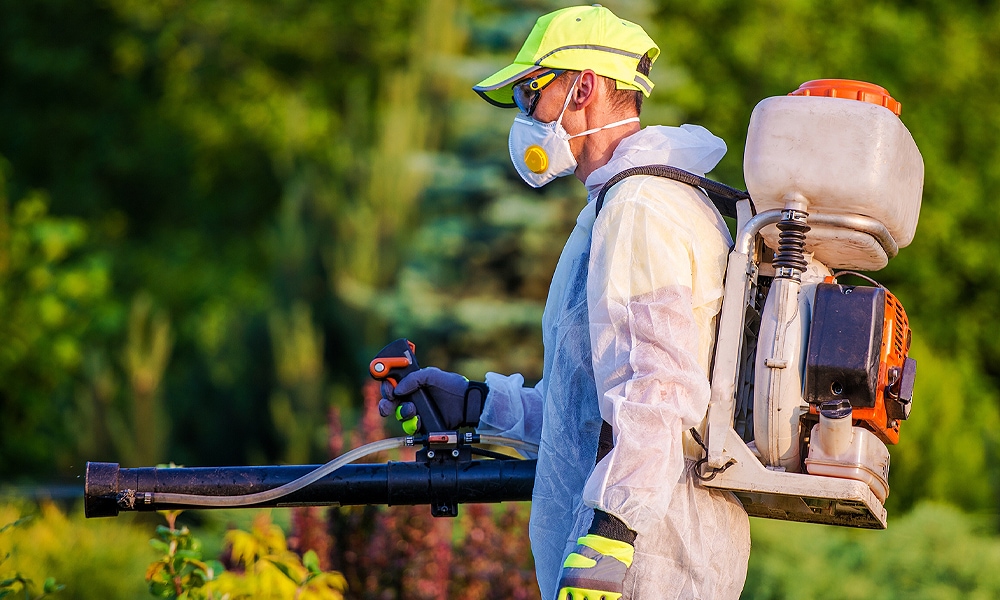
Beekeepers will remove bees and transfer them to a different area. If you would like to move them from your house to a different corner of your property, they can do that for you.
But if you do not have space for a hive, they can take the bees to an environment where they can thrive, far away from human contact. Beekeepers are preferable to pest exterminators because there is real value to keeping these insects alive.
While they do not make good house guests, bees play a huge role in keeping our forests and crops alive. Beekeepers are the key to a win-win situation where you can keep your home bee-free while keeping the earth bee-full.
Related:

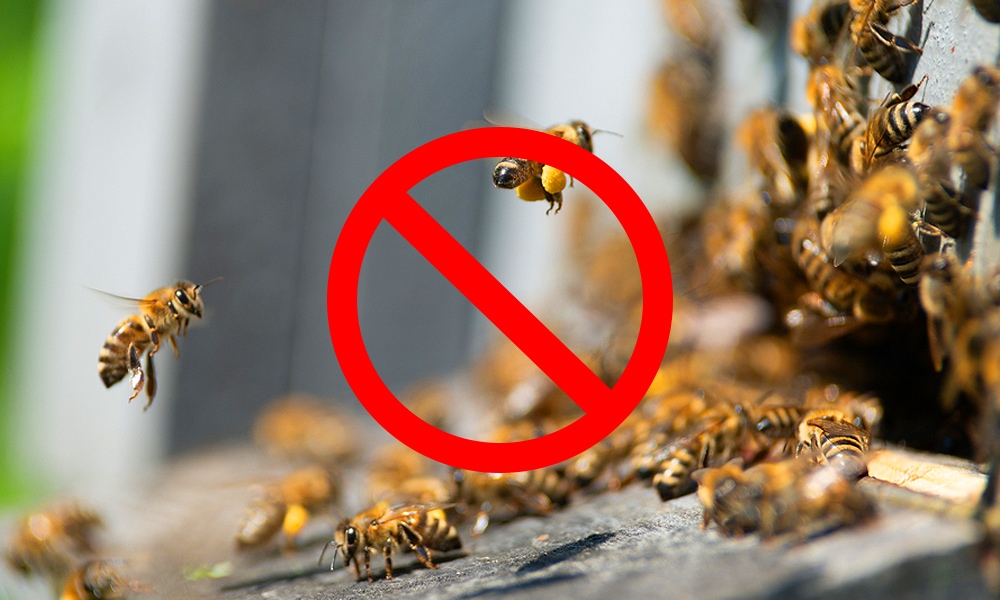
How do I get rid of bees flying in and out of a small hole on the outside wall of my house? There must be bees inside my wall of my house.
Hi did u find the solution i also have same problem now if u find the way how to get rid of it please share with me.
Thanks
I have bees that have found a way into my home. Bee keepers and pest control have been out and can’t locate them, they think they are in the upstairs floor which is the downstairs ceiling. How do I locate the exact area they are In so they can remove only that part of the ceiling instead of the entire house
cinnamon did nothing….
bill, this time of the year bees can get aggitated,because of dirth. They dont have lot to forage on. Try feeding your beed sugar water and they will calm down.
If you thinking about killing your hive,im sure some local beekeeper will gladly take them . Its all about the management.
Thanks for the info. I have a bee hive (3 tiers of boxes) in my backyard. The bees used to be gentle, but I think a different type of bee took it over, now they are aggressive and cause a safety liability. I’d love to re-queen the hive, but don’t have enough confidence in my ability to find old queen. Planning to take honey out, hopefully finding and killing old queen when I do, but if I can’t find her, I will exterminate them. However, I’m afraid if I spray anything in the hive, it will make it useless for future bees. I want to be humane, but also, don’t want bees to fly away and become someone else’s problem. Any ideas?
Bill, im a beekeeper and i would recomednd feeding the bees this time of the year as the nectar flow in slow or none. They will get little aggresive as they are running out of food. Usualy that will helpa alot.
Im sure you can find beekeeper willing to take your bees ,before you decide to kill them.
I have bees going in my gas tank it’s a truck that hasn’t been running how can. Steer them away
Amazing!!! Your article was very informative and helpful. I love your story about you and your family. I am a Lakota native gal and 100% about earth and natural remedies. Your article helped me a lot. I have bees near my garden and I don’t kill them but need them to relocate because I am allergic. I will use cinnamon. Thank you and keep writing!
Hello Garth!
I just read your article on 15 tips to get rid of bees fast and humanely. You seem to know a lot about bees so I need your advice, I have a ground bee problem, but I don’t know what kind of bees are here. The entrance hole is about 1-1/2” wide. I need them to relocate but I won’t kill them. I used a hose to flood the nest first in early afternoon when most of them should have been out. Started water slow then increased volume. Let it run about 20 minutes. Repeated procedure early evening. Some were still buzzing around. Poured bottle of cinnamon into hole and all around it. Next morning still some buzzing around. A friend pushed dirt into hole to close it off. Still some buzzing around. How can I convince them to relocate! Thank you for any help you can provide.